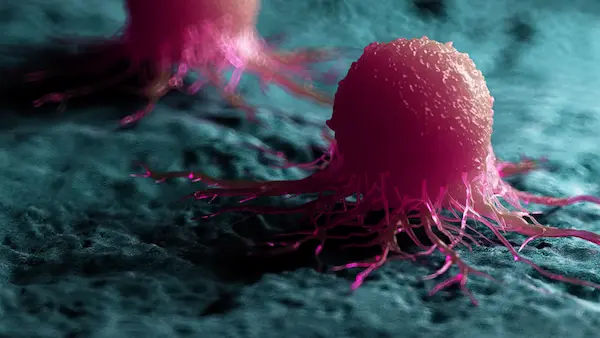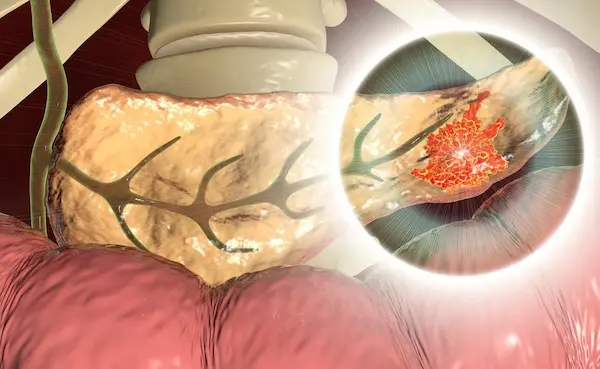Pancreatic cancer is one of the hardest cancers to treat, and researchers are always looking for new ways to fight it. In recent years, the PNC-27 peptide has gained attention in laboratory studies. Early research suggests that this peptide may uniquely target cancer cells, offering scientists a possible tool for future cancer treatments.
Although these studies are still developing, the findings point to promising directions. By learning more about how the PNC-27 peptide interacts with cancer cells, researchers aim to discover new approaches that could enhance the understanding of pancreatic cancer in the laboratory.
As researchers further explore this peptide, one of the first areas of focus is understanding how it recognizes and targets tumor cells without harming normal ones.
Discover PNC-27 Peptide from Peptide Works, a lab-grade peptide studied for its selective action against pancreatic cancer cells.
How PNC-27 Peptide Targets Cancer Cells Selectively?

The PNC-27 peptide binds to a protein marker called HDM-2, which is found on the outer membrane of many cancer cells. Healthy cells rarely show this surface marker, which explains the peptide’s selective cytotoxicity. Once bound, PNC-27 creates pores small breaks in the membrane that cause the cancer cell to lose stability and die.
Researchers describe this process as membranolysis, a form of direct cell destruction. Unlike therapies that trigger apoptosis, PNC-27 often drives necrosis, a faster and more visible cell death. In pancreatic cancer models such as the MIA-PaCa-2 cell line, these effects are especially clear, making the peptide a promising subject for future laboratory research.
With this mechanism in mind, it becomes important to ask why pancreatic cancer cells in particular show such vulnerability to PNC-27.
What Makes Pancreatic Cancer Cells a Unique Target for PNC-27 Peptide?
Pancreatic cancer cells such as MIA-PaCa-2 and TUC-3 often carry high levels of the HDM-2 protein on their outer membranes. Healthy cells rarely display this marker, which makes the difference critical. Because of this interaction, PNC-27 can recognize and attack tumor cells while sparing normal tissue.
After binding, the peptide forms pores in the membrane. These openings cause the cell to break down through necrosis, a rapid and destructive process distinct from apoptosis. This selective cytotoxicity explains why pancreatic tumor cells are a strong research focus for PNC-27 studies.
To understand this selectivity more fully, researchers have also compared the type of cell death PNC-27 causes with other well-known pathways.
Necrosis vs Apoptosis: How PNC-27 Peptide Kills Cancer Cells?

Because it binds to the HDM-2 surface marker, PNC-27 destroys tumor cells by driving necrosis rather than apoptosis. Once attached, the peptide forms pores that rupture the cancer cell’s membrane. This sudden loss of stability causes the cell to break apart quickly, releasing its contents in an uncontrolled way.
Apoptosis, often called programmed cell death, follows a slower and more orderly path. Researchers studying pancreatic cancer lines such as MIA-PaCa-2 note that PNC-27 bypasses this route entirely. Its ability to trigger fast, necrotic death makes it stand out among research peptides, offering scientists a clear point of study for selective cancer targeting.
Beyond differences in cell death, scientists have also looked deeper at what happens inside tumor cells after exposure to PNC-27.
How PNC-27 Peptide Disrupts Cancer Cell Mitochondria?
The peptide’s effects are not limited to the cell surface. After attaching to the HDM-2 marker, PNC-27 can also move inside the cell and interact with mitochondrial membranes. These organelles are the power source of a cell, and damaging them disrupts vital energy production.
When mitochondria lose integrity, cancer cells collapse even faster. This adds another layer to PNC-27’s selective cytotoxicity, making its effects more powerful against tumor cells. For scientists, studying mitochondrial disruption helps explain why PNC-27 could be a strong research tool for understanding pancreatic cancer biology.
This ability to combine surface targeting with internal damage leads naturally to a closer look at its tumor-specific action.
Selective Cytotoxicity of PNC-27 in Pancreatic Cancer

One of the most striking features of PNC-27 is its tumor-specific action. In research models, the peptide binds to HDM-2 proteins that sit on the membranes of pancreatic tumor cells. Normal cells usually lack this marker, which explains why they remain unharmed while cancer cells are destroyed.
This tumor specificity makes PNC-27 especially valuable in laboratory studies. By forming pores only where HDM-2 is present, the peptide avoids damaging healthy tissue. For scientists, this selectivity offers a clearer way to study potential cancer treatments and highlights why PNC-27 remains an important focus in pancreatic cancer research.
Still, many wonder if this protection for normal cells also holds true beyond the laboratory.
Does PNC-27 Peptide Harm Healthy Cells?
Studies suggest the PNC-27 peptide targets only cancer cells while sparing normal ones. This selectivity comes from its binding to the HDM-2 protein, which sits on the membranes of tumor cells but is absent in normal tissues. By forming pores only where HDM-2 is present, PNC-27 shows selective cytotoxicity in research models.
However, safety in humans remains uncertain. The FDA has not approved PNC-27 for treatment, and reports caution against its use without supervision. For scientists, the fact that healthy cells remain largely unaffected in the lab makes PNC-27 an important subject for ongoing pancreatic cancer research.
Looking ahead, the focus now turns to how this peptide might shape future studies and what possibilities it could open in the fight against pancreatic cancer.
Future of PNC-27 Peptide in Pancreatic Cancer
The research journey of the PNC-27 peptide continues to evolve. The peptide has gained attention for its ability to target pancreatic cancer cells while leaving healthy tissue untouched. Its impact on both cell membranes and mitochondria highlights its promise as a research tool in one of the most challenging cancers to study.
That said, all current findings remain preclinical, mostly in cell lines and limited animal studies. There are no large-scale studies or clinical trials, meaning its safety and effectiveness in humans are still unknown.
Ongoing investigations will focus on its safety, delivery methods, and broader applications in the lab. Researchers worldwide trust Peptide Works for high-quality peptides, supplied strictly for research use. While not approved for human use, the PNC-27 peptide continues to inspire hope that tomorrow’s science may unlock new strategies against pancreatic cancer.
All peptides and compounds mentioned are strictly for research purposes only and not for human use.
References
[1] Krzesaj P, Adler V, Feinman RD, Miller A, et al. Anti-Cancer Peptide PNC-27 Kills Cancer Cells by Unique Interactions with Plasma Membrane-Bound hdm-2 and with Mitochondrial Membranes Causing Mitochondrial Disruption. Ann Clin Lab Sci. 2024 Mar;54(2):137-148.
[2] Sarafraz-Yazdi E, Bowne WB, Adler V, Sookraj KA, et al. Anticancer peptide PNC-27 adopts an HDM-2-binding conformation and kills cancer cells by binding to HDM-2 in their membranes. Proc Natl Acad Sci U S A. 2010 Feb 2;107(5):1918-23.
[3] Davitt K, Babcock BD, Fenelus M, Poon CK, et al. The anti-cancer peptide, PNC-27, induces tumor cell necrosis of a poorly differentiated non-solid tissue human leukemia cell line that depends on expression of HDM-2 in the plasma membrane of these cells. Ann Clin Lab Sci. 2014 Summer;44(3):241-8.
[4] Sarafraz-Yazdi E, Mumin S, Cheung D, Fridman D, et al. PNC-27, a Chimeric p53-Penetratin Peptide Binds to HDM-2 in a p53 Peptide-like Structure, Induces Selective Membrane-Pore Formation and Leads to Cancer Cell Lysis. Biomedicines. 2022 Apr 20;10(5):945.









